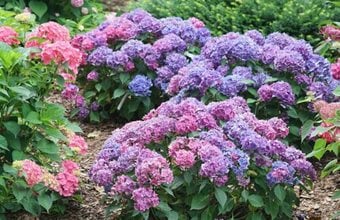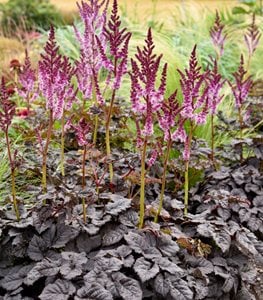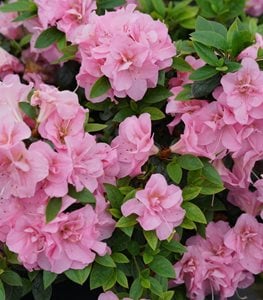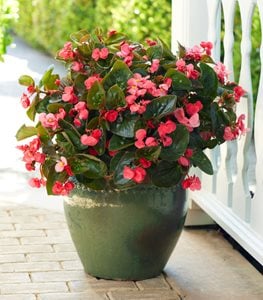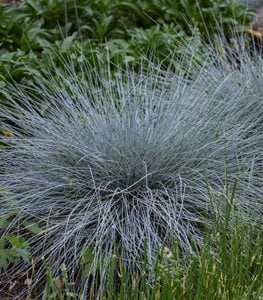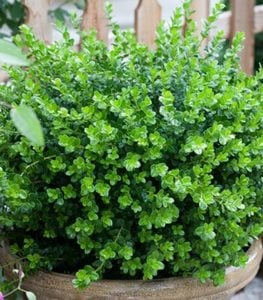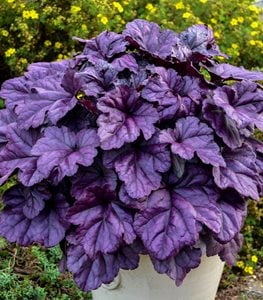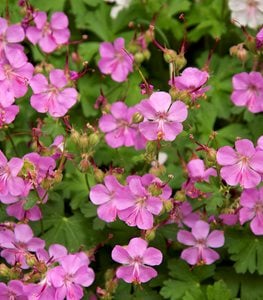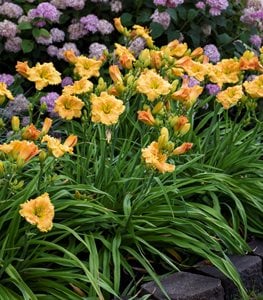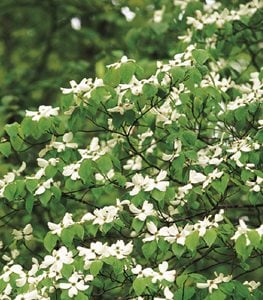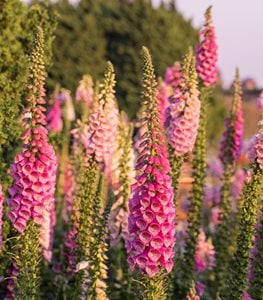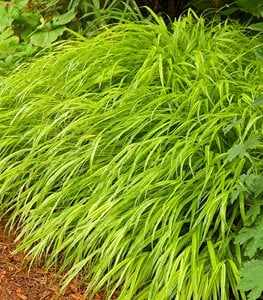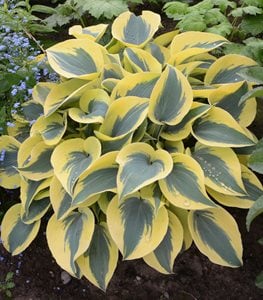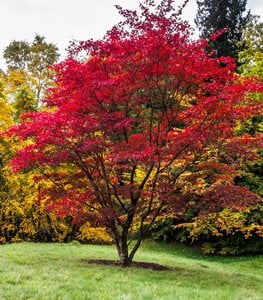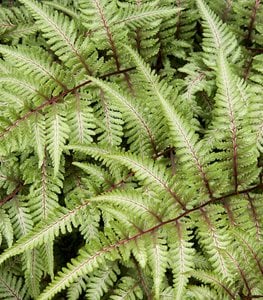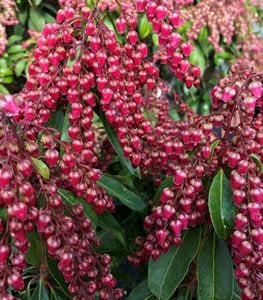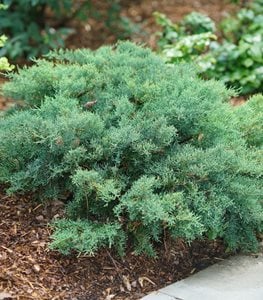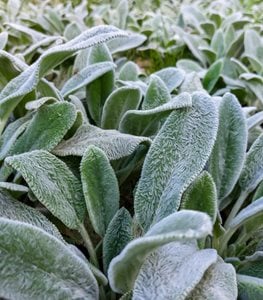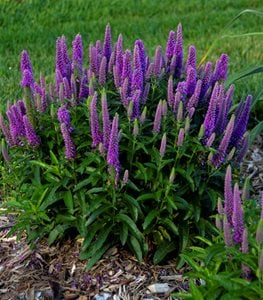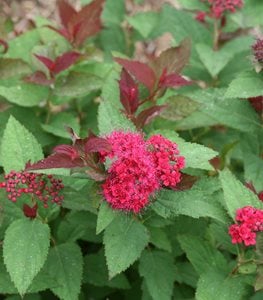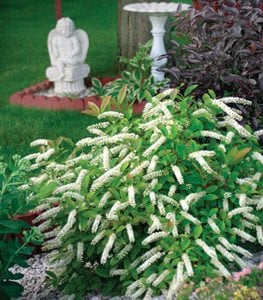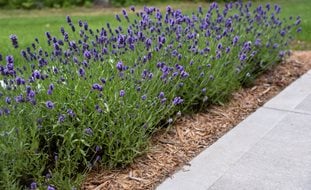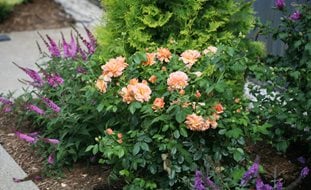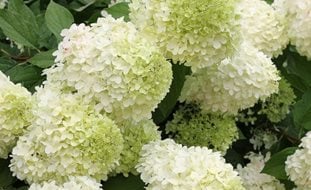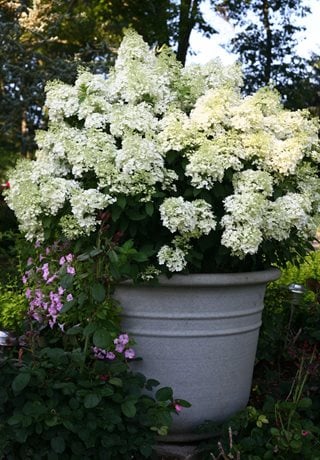20 Best Companion Plants for Hydrangeas
Combine hydrangea shrubs with these tried-and-true companionsHydrangea (Hydrangea spp.) is one of the most popular ornamental landscape plants for its large showy flower heads that provide late-season interest to the landscape. This hardy deciduous shrub has an elegant growth habit, attractive serrated foliage, and long-lasting blooms that lend structure and color to mixed borders, woodland landscapes, foundation plantings, and shrub borders.
This versatile landscape plant pairs well with many other shrubs, trees, and perennials. When choosing what to plant with hydrangeas, select companions that thrive in similar growing conditions. Hydrangeas grow best in partial shade with rich, well-draining soil and regular water. Here are some of the best companions to plant with hydrangeas, along with ideas on how to use them in your yard.
HYDRANGEA COMPANION PLANTS
ASTILBE (Astilbe spp.)
Zones: 3-9
Exposure: Full sun to shade; flowers best in partial sun
Habit: Upright spreading habit
Height/Spread: 1 to 4 feet tall and wide
Bloom time: Summer
Astilbe is a popular garden plant with dissected fern-like foliage and showy flower plumes in colors of white, pink or red. This hardy herbaceous perennial prefers similar growing conditions to hydrangeas of dappled shade and rich, moist soil. Plant in a mixed border alongside a pink or white flowered panicle hydrangea or mass in the landscape. Learn more about growing astilbe.
AZALEA (Rhododendron spp.)
Zones: 3-9
Exposure: Full sun to partial shade, with protection from hot afternoon sun
Habit: Upright bushy, open, spreading or ground cover habit
Height/Spread: 1 to 20 feet tall, 2 to 10 feet wide; average size of 4 to 6 feet tall and wide
Bloom time: Early spring to summer; some varieties rebloom from summer to fall
This popular spring-blooming shrub has evergreen or deciduous foliage, with bell-shaped flowers in a range of colors. Azaleas enjoy the same growing conditions as hydrangeas of partial shade, rich, acidic soils, and regular moisture. Plant alongside hydrangeas in a woodland or shrub border. Learn more about growing azalea bushes.
BEGONIA (Begonia spp.)
Zones: Most begonias are hardy in Zones 8-11 and are grown as annuals. Hardy begonias survive to USDA Zone 6.
Exposure: Partial sun to shade
Habit: Mounding, bushy or upright habit
Height/Spread: 6 to 36 inches tall, 6 to 12 inches wide
Bloom time: Early summer to frost
Begonias are grown for their long bloom time, decorative foliage and versatility in the landscape. Commonly used in containers or as bedding plants, place this shade lover around the base of hydrangea plants for months of continuous color from late spring until frost. Learn more about growing begonias.
BLUE FESCUE (Festuca glauca)
Zones: 4-8
Exposure: Full sun to light shade
Habit: Mounding clumping habit
Height/Spread: 6 to 12 inches tall, 6 to 18 inches wide
Bloom time: Summer
Blue fescue is a low maintenance ornamental grass, producing compact tufts of blue-green foliage that provides year-round interest. The silvery coloring and soft texture complement the classic elegance of hydrangea shrubs. Mass blue fescue along a hydrangea border for long-lasting color.
BOXWOOD (Buxus spp.)
Zones: 4-9
Exposure: Full sun to shade
Habit: Mounding or upright habit
Height/Spread: 1 to 20 feet tall, 2 to 8 feet wide
Boxwood is an evergreen shrub and a staple of formal European landscapes, providing structure and background interest. The formal structure of neatly clipped boxwood hedging offers contrast to the looser habit of hydrangea bushes. Use boxwood to edge a hydrangea border or lend year-round color in a mixed shrub border. Learn more about growing boxwood.
CORAL BELLS (Heuchera spp.)
Zones: 4-9
Exposure: Partial sun to partial shade
Habit: Mounding or spreading habit
Height/Spread: 6 to 18 inches tall, 12 to 30 inches wide
Bloom time: Late spring to mid-summer
Coral bells are hardy perennials with attractive evergreen or semi-evergreen foliage in a wide range of colors. Plants tolerate a range of growing conditions and thrive in woodland settings that hydrangeas also prefer. Underplant hydrangeas with coral bells for continuous color throughout the growing season. Learn more about growing coral bells.
CRANESBILL(Geranium spp.)
Zones: 3-9
Exposure: Full sun to partial shade
Habit: Upright or low spreading habit
Height/Spread: 6 to 24 inches tall, 6 to 36 inches wide
Bloom time: Spring to fall
Cranesbill hardy geranium is a reliable low-maintenance perennial that is commonly used in formal English-style landscapes. The attractive scalloped foliage and flowers in cool hues of white, pink, purple, and blue provide complementary color to hydrangea blooms. Plant along the edge of a hydrangea border or around plants to cool the root zone and suppress weeds. Learn more about growing cranesbill geraniums.
DAYLILY (Hemerocallis spp.)
Zones: 3-9
Exposure: Full sun to light shade
Habit: Upright spreading habit
Height/Spread: 1 to 6 feet tall, 1 to 4 feet wide
Bloom time: Late spring to fall, depending on the variety
Daylily is grown for its trumpet-shaped flowers that come in a wide array of colors and patterns. This reliable herbaceous perennial blooms in summer around the same time as many hydrangeas, making it a good companion in mixed borders and beds. The strappy foliage provides pleasing contrast to the rounded leaves of hydrangea bushes. Learn more about growing daylilies.
DOGWOOD TREE (Cornus spp.)
Zones: 3-9, depending on the variety
Exposure: Full sun to partial shade
Habit: Upright habit
Height/Spread: 10 to 40 feet tall and wide
Bloom time: Spring
Flowering dogwood is a small deciduous tree with an elegant canopy that provides shade for understory plants including hydrangeas. Showy pink or white flowers appear in spring for early season color. This popular landscape tree thrives in similar conditions to hydrangeas of full sun to partial shade and moist, well-draining soil. Learn more about growing dogwood trees and shrubs.
FOXGLOVE (Digitalis spp.)
Zones: 3-8
Exposure: Full sun to partial shade
Habit: Upright habit
Height/Spread: 2 to 6 feet tall, up to 2 feet wide
Bloom time: Late spring to summer
This perennial, biennial, or annual is grown for the tall spires of bell-shaped flowers in shades of white, pink, and lavender. The upright spiky habit provides contrast to the rounded form of hydrangea shrubs. Create a companion planting with hydrangeas in a mixed border or cottage-style landscape. Learn more about growing foxglove.
HAKONE GRASS (Hakonechloa macra)
Zones: 5-9
Exposure: Partial sun to shade
Habit: Mounding habit
Height/Spread: 1 to 2 feet tall, 2 feet wide
Bloom time: Summer; flowers are insignificant
Hakone grass is one of the few ornamental grasses that thrives in partial shade. Also known as Japanese forest grass, the strappy golden or variegated foliage lights up shady areas and beautifully complements the rounded green leaves and flower colors of hydrangeas. Use in a woodland landscape or mass planting in front of hydrangeas. Learn more about how to grow Japanese forest grass.
HOSTA (Hosta spp.)
Zones: 3-9
Exposure: Partial sun to shade
Habit: Mounding spreading habit
Height/Spread: 2 to 48 inches tall, 5 to 60 inches wide
Bloom time: Summer
Hosta is grown for the bold foliage that comes in an array of colors, shapes, and patterns. The spreading habit of hosta complements the elegant upright structure of hydrangeas. Combine hostas with more shade-tolerant hydrangea varieties towards the front of a mixed or woodland border. Learn more about growing hosta plants.
JAPANESE MAPLE (Acer spp.)
Zones: 5-8
Exposure: Partial sun to partial shade
Habit: Upright, spreading, or weeping habit
Height/Spread: 8 to 30 feet tall and wide
This small to medium-sized tree is a popular choice for Asian-style and formal landscapes, with an elegant structure and dissected foliage that occurs in a range of colors. Burgundy or red-foliaged varieties lend a pop of contrast against green hydrangea foliage. Japanese maples enjoy similar growing conditions to hydrangeas of partial shade and rich, moist soil. Learn more about growing Japanese maple trees.
JAPANESE PAINTED FERN (Athyrium niponicum var. pictum)
Zones: 3-9
Exposure: Partial to full shade
Habit: Upright arching habit
Height/Spread: 8 to 30 feet tall and wide
Ferns are a great companion plant for hydrangeas, preferring the same growing conditions of partial shade and rich, moist soils. Japanese painted fern produces silvery foliage with a lacy structure that contrasts with the bolder leaves of hydrangeas. Plant underneath hydrangea shrubs or use to edge woodland borders.
JAPANESE PIERIS (Pieris japonica)
Zones: 5-8
Exposure: Full sun to partial shade
Habit: Upright bushy habit
Height/Spread: 3 to 12 feet tall, 3 to 8 feet wide, depending on the variety
Bloom time: Late winter to early spring
Also known as lily-of-the-valley shrub or andromeda, this broadleaf evergreen shrub produces hanging clusters of white or pink flowers and attractive glossy foliage. Japanese pieris is commonly used in Asian-style landscapes and woodland borders, enjoying similar growing conditions to hydrangeas of partial shade and rich, moist soils. Learn more about growing Japanese pieris shrubs.
JUNIPER (Juniperus spp.)
Zones: 2-10, depending on the variety
Exposure: Full sun, with protection from hot afternoon sun in hotter climates
Habit: Upright, spreading, ground cover, or weeping habit
Height/Spread: 6 inches to 130 feet tall, 1 to 25 feet wide
Conifers provide evergreen contrast to deciduous hydrangea bushes in mixed or shrub borders. Juniper comes in many forms, sizes, and foliage colors to suit a range of landscape needs. Use a low ground cover type to edge a hydrangea border, or a taller variety as a background plant. Learn more about growing juniper shrubs and trees.
LAMB'S EAR (Stachys byzantina)
Zones: 4-9
Exposure: Full sun
Habit: Mounding or spreading habit
Height/Spread: 6 to 18 inches tall, 12 to 36 inches wide
This perennial ground cover produces silvery leaves with a soft fuzzy texture, hence the common name. Plants are virtually carefree once established. The velvety foliage pairs well with hydrangeas as edging for a shrub border. Learn more about growing lamb's ear plants.
SPEEDWELL (Veronica spp.)
Zones: 3-9
Exposure: Full sun to partial shade
Habit: Upright or ground cover habit
Height/Spread: 3 to 48 inches tall, 18 to 24 inches wide
Bloom time: Spring to fall, depending on the variety; some with repeat bloom
Speedwell produces spiky or open-faced flowers in shades of white, pink, blue, or purple. This carefree perennial is tolerant of different growing conditions. Place groundcover types underneath hydrangea shrubs or use as edging. Tall upright varieties lend contrast to hydrangeas in mixed borders or mass plantings. Learn more about growing speedwell plants.
SPIREA (Spiraea spp.)
Zones: 4-8
Exposure: Full sun to light shade
Habit: Upright bushy habit
Height/Spread: 2 to 10 feet tall and wide
Bloom time: Spring to fall, depending on the variety; some with repeat bloom
One of the most versatile flowering landscape shrubs, spirea can be used as hedging, in mass plantings and shrub borders. This hardy deciduous shrub is virtually carefree once established. Combine gold-foliaged varieties with blue-flowering hydrangeas for dramatic contrast. Learn more about growing spirea.
VIRGINIA SWEETSPIRE (Itea virginica)
Zones: 5-9
Exposure: Full sun to partial shade
Habit: Upright arching habit
Height/Spread: 2 to 8 feet tall and wide
Bloom time: Late spring to mid-summer
Virginia sweetspire is a deciduous shrub grown for the graceful arching habit and white bottle-brush flowers that appear in late spring. Create a shrub border with sweetspire, hydrangeas, and other shrubs that bloom at different times for season-long color. Learn more about growing sweetspire.
WHAT NOT TO PLANT WITH HYDRANGEAS
Not all plants pair well with hydrangeas. Here are some combinations to avoid:
- Sunflower prefers full sun and hotter conditions than hydrangeas, which require some shade.
- Lavender is a sun-loving perennial that performs best in dry conditions and leaner soil, so will not thrive near hydrangeas.
- Rosemary is a shrubby perennial herb that prefers sunny, dry conditions and lean soil.
- Roses bloom best in full sun, which is too much light for many hydrangea bushes.
- Large trees compete for water and nutrients, which may result in failure to thrive for hydrangea bushes.

